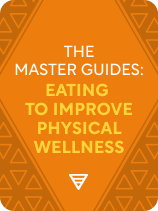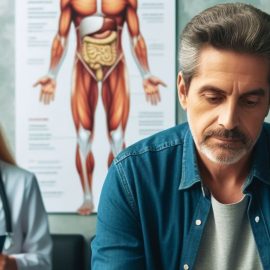

This article is an excerpt from the Shortform book guide to "The Master Guides: Eating to Improve Physical Wellness" by Shortform. Shortform has the world's best summaries and analyses of books you should be reading.
Like this article? Sign up for a free trial here.
What’s the real difference between whole foods and processed foods? Why do some nutrition experts recommend eating primarily plant-based meals?
Making healthy food choices doesn’t have to be complicated. Leading nutrition experts agree on the basics when it comes to selecting foods that support optimal health. Their recommendations focus on choosing whole, plant-based foods while limiting processed items.
Continue reading to learn how to make healthy food choices with simple strategies from experts.
Making Healthy Food Choices
In Western culture, you might find yourself overwhelmed by food industry ads, diet fads, and popular science articles about the latest superfoods. It can be difficult to keep up with what foods are “good” and “bad”—especially when these labels seem to change every week. Despite these mixed messages about nutrition, many experts agree: If you want to improve your physical health, making healthy food choices can be boiled down to two simple guidelines:
- Adopt a largely whole-food, plant-based diet.
- Avoid highly processed and high-sugar foods.
In his book In Defense of Food, Michael Pollan shares advice on how to make healthy food choices. It includes his recommendation to eat green plants as well as a few other nuances to maximize physical health. Here are the key points to remember:
- Eat only real food (meaning whole foods).
- Eat more green plants, making vegetables a main dish and meat a side dish.
- Eat a variety of fruits and vegetables to consume a variety of nutrients.
- Eat wild plants and game, which are high in nutrients.
- Don’t eat food with more than five ingredients or containing high-fructose corn syrup.
- Avoid foods with health claims. Real food doesn’t typically come in packages, and when it does, it often doesn’t need a label expressing how healthy it is.
- Avoid industrialized meats and produce.
In his book How Not to Die, Michael Greger applies similar principles but recommends simplifying your food choices by visualizing categories as a traffic light.
“Green foods” are unprocessed plant foods: Unprocessed means nothing bad is added and nothing good is taken away. You can eat unlimited amounts of these foods.
“Yellow foods” are processed plant foods and unprocessed animal foods: Processed means something bad is added or something good is taken away. For example, drinking almond milk is worse than eating almonds. Ideally, you’d replace yellow foods with their corresponding green foods, which are more nutritious.
“Red foods” are ultra-processed plant foods and processed animal foods: Ultra-processed food means that many ingredients have been added and many good nutrients have been taken away. Eat red foods sparingly. It’s OK to eat these in small amounts if they help you eat more green foods (such as bacon bits or hot sauce with vegetables).
Caveats: Food Sources and Bio-Individuality
While Pollan, Greger, and the Campbells (The China Study) generally advocate eating mostly plant-based whole foods, they also mention a couple of caveats to keep in mind to ensure those foods are optimally healthy. These caveats include considering the source of your food and your unique biological needs.
Consider the Source: How Soil Health and Crop Diversity Affect Nutrition
Pollan asserts that, when one aspect of the food chain is disrupted, it affects the entire food chain. This means that, if the soil is unhealthy, the plants grown in it will be unhealthy, as will the humans who eat the plants. This principle explains how industrialized agriculture has contributed to less nutritious produce.
After World War II, farmers began adding nitrogen, phosphorus, and potassium to soil to increase the rate of plant growth. At the same time, farms that once raised a diverse species of crops and livestock started growing mostly corn and soybeans. Both actions created plants lacking in nutrients.
When plant growth speeds up, Pollan explains, they have less time to soak up nutrients. And with fertilizer readily available, plant roots have no need to dig deep, where they would normally absorb minerals beneficial to both plants and humans. This not only makes the foods less nutritious but also makes plants more susceptible to pests and disease, which require the use of pesticides to fix. The pesticides seep into the plants and are digested as toxins in the body.
In Silent Spring, biologist and conservationist Rachel Carson details the many negative effects of pesticides on animal and human populations, including an increased risk of cancer, genetic damage, and reproductive issues as well as more acute health problems like nerve damage, vomiting, and diarrhea.
In addition to the problem of soil health, reducing the ecological diversity of farms to one or two crops means less diversity in the nutrients going back into the soil. Pollan writes that the human body requires a myriad of minerals and nutrients to function properly, and two species alone are unlikely to provide all of them, especially when those species are industrially grown.
Because of these factors, Pollan recommends eating plant-based foods from a home-grown garden or local farm with healthy soil (free of pesticides and industrial-grade fertilizer), eating diverse foods to get a wider range of nutrients, and eating wild foods, which tend to be more nutritious than domesticated crops.
Consider Bio-Individual Needs
The second caveat to the food recommendations we’ve discussed is the need to consider your unique biological needs. Everyone’s body is different, Pollan writes, and there are inherent physical differences that can either support or hinder nutritional health. For example:
- People have genetically predisposed metabolisms that break food down in different ways and at various speeds.
- Some bodies break down fats in a way that always leads to high cholesterol regardless of what they eat.
- Digestive systems vary in ecology, so they digest and process calories differently.
No human is a robot that reacts to food in the same way every time, Pollan says. Your body is constantly adjusting to your environment, and the science on the physiological makeup of the digestive system is incomplete. Based on this, we can infer that there’s no single correct way to eat all the time.
In Intuitive Eating, nutritionists and researchers Evelyn Tribole and Elyse Resch also argue that by tuning into your internal cues about when you’re hungry and full and what foods you crave, you can naturally fulfill your nutritional needs and eat foods that make you feel better.
Based on these two perspectives, it may be most beneficial to experiment with your diet to identify plant-based whole foods that support your physical health and feel good and satisfying to you. For example, if you feel like eating something sweet, you might apply the principles from these experts by opting for a sweet fruit like strawberries or a banana—plant-based whole foods that’ll also fulfill your craving.
Exercise: Reflect on How Your Diet Impacts Your Physical Health
Experts advocate a two-pronged approach to eating well: eating more plant-based whole foods and fewer processed and high-sugar foods. In this exercise, you’ll reflect on what you typically eat and how those foods might be impacting your physical health. Then you’ll start planning how to incorporate more plant-based, whole foods into your diet.
- How do you feel physically on days when you eat more processed foods than whole foods? For example, on days full of processed foods you might experience symptoms like stress, food cravings, and brain fog.
- How do you feel physically on days when you eat more plant-based, whole foods? For example, you might feel like you have more energy or feel satisfied without eating as much food.
- What are three of your favorite plant-based, whole foods? How could you incorporate more of them into your regular eating habits? For example, if you enjoy eating fruit, you might buy a bag of apples at the beginning of the week so you can eat one every day with breakfast.
- Brainstorm convenient places to find high-quality plant-based, whole foods—free of pesticides and other contaminants. Write down a few places where you might find food that’s optimal for your physical health, such as your garden (or a friend’s) or a local farmer’s market.

———End of Preview———
Like what you just read? Read the rest of the world's best book summary and analysis of Shortform's "The Master Guides: Eating to Improve Physical Wellness" at Shortform.
Here's what you'll find in our full The Master Guides: Eating to Improve Physical Wellness summary:
- The two simple guidelines for eating well
- How to distinguish beneficial foods from harmful foods
- Why supplements aren’t worth it—except in some cases






